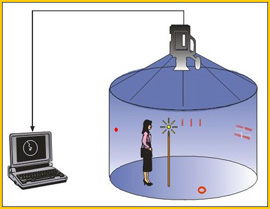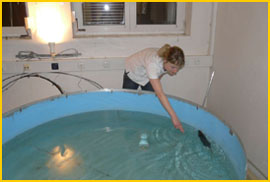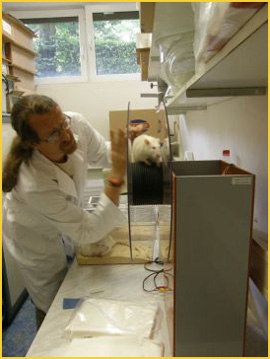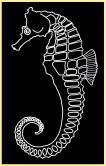 |
Address:
DPT NEUROPHYSIOLOGY of MEMORY
Institute of Physiology ASCR, v.v.i.
Videnska 1083
142 20 - Prague 4
E-mail of the head of dpt:
Ales.Stuchlik@fgu.cas.cz
E-mail of the deputy of the head:
Jan.Svoboda@fgu.cas.cz



|
 |
|
|
|
 |
 |
PROJECTS:
Integration of molecular, cellular and systems approaches in study of cognitive functions.
We obviously can take many approaches in search for neural substrate of cognitive functions
and learning and memory, from inactivations of brain areas to e.g. immediate-early-gene imaging.
Each of these techniques have different explanatory value and resolution;
each points to a different
level of understanding. Our focus is to integrate molecular, cellular and systems levels in understanding
the cognitive functions in mammals,
mainly learning and memory, behavioral flexibility, working memory,
recognition of position and other cognitive domains.
The aim is to elucidate the mechanisms
by which memories and other representations are formed
and to search for treatments for resistant cognitive deficits in Alzheimer´s disease,schizophrenia, OCD etc.
Neuropharmacological studies, animal models of brain disorders and new therapeutics
Etiology and pathophysiology of CNS disorders is poorly understood.
However it is thought to involve an interaction between genetic and environmental factors
during brain development. But, there is a fundamental gap in our understanding of the neurobiological mechanisms by which environmental
factors interact with genetic susceptibility to trigger symptom
onset and CNS disease progression.
There is rising interest in the development and application
of animal models of CNS disorders to explore neurobiological mechanisms and identification of drug targets.
Our projects are focused on behavioral pharmacology in field of animal model of CNS disorders.
Animal models of cognitive disorders are regarded as experimental heuristic approaches aiming at neurobiology of
CNS diseases and at developing drug treatment strategy. These models have provided valuable insights regarding mechanism and treatment
when used appropriately. On the other side there are numerous limitations to the use of animal models of CNS disorders,
not the least of which is the inherent challenge associated with attempting to model complex and still poorly understood human CNS disorders in a rodents.
Simply it is difficult to build an animal model that perfectly reproduces all symptoms and etiology of human CNS disorders.
A key criterion that is often used when assessing the utility of an animal model is validity.
The most common types of validity that
are considered are
construct validity (requiring the model to have similar underlying neurobiology, genetic or environmental factors),
face validity (similar symptom manifestation to the clinical condition) and predictive validity (responsiveness to clinically effective therapeutic agents).
This scientific approach brings better understanding the CNS disorders and pharmacotherapy without the added risk of harming for the patients.
Molecular and in vivo imaging, immediate-early genes, cognitive coordination and psychosis
IEG expression is triggered in neurons after patterned activity in a molecular cascade leading from neuronal activity to synaptic plasticity.
It is used to map neural circuit activity patterns, although
they may actually correspond to the amount of elicited plasticity.
Arc/Homer1a catFISH (Figures 1,2) uses expression of IEGs Arc and Homer 1a to map activated
neuronal ensembles during two distinct behavioral episodes and allows the effect of changes in an environment on ensemble activity patterns of the same neurons.
For example, activated ensembles
are more similar after exploration of the same environment (A-A) than after exploration of distinct environments (A-B).
Our data show that this contextual specificity is disrupted after systemic administration of psychotomimetic dizocilpine (MK-801) at a
dose of 0.15 mg/kg whereas lower dose (0.10 mg/kg) had no effect.
Both doses generally reduced IEG expression, but only the higher dose increased similarity between ensembles expressing IEGs after exploration
of two different environments A (circular arena) and B (square open-field in a different room). The same dose (0.15 mg/kg), but not 0.10 mg/kg,
also disrupted spatial coordination on a rotating arena (Carousel) in the presence of irrelevant information.
Higher dose of MK-801 increased similarity between CA1 ensembles expressing IEGs Arc a Homer 1a in distinct environments
A and B and eliminated the contextual specificity of IEG expression. The similarity score is defined as a ratio of difference diff(E1E2)
between observed (Arc&Homer1a)+ and expected (chance) overlap p(E1E2) of both activated ensembles and difference between smaller of both
(Arc+ or Homer 1a+) and their expected (chance) overlap p(E1E2).
Similarity score = diff(E1E2)/(least epoch - p(E1E2), where E1 a E2 are proportions of Homer 1a+ Arc+ neurons,
respectively,
and p(E1E2) is their product E1*E2.
Study of cognitive functions in humans, spatial navigation and its impairment
In the project focused on human cognitive functions we are studying spatial orientation,
strategies used during navigation and the character
of spatial representations in the human mind.
In this respect we are also interested in impairment of these abilities in neurological diseases,
as the Alzheimer’s disease or schizophrenia. In a great extent we utilize the human analogies developed for experimental animals, mainly rats,
which enable us comparison and interconnection of the
results obtained in human subjects and animals. In the same vein it is possible to compare
the performance impairment in these tests in neurology patients with animal models of brain diseases.
backwards
|
|









